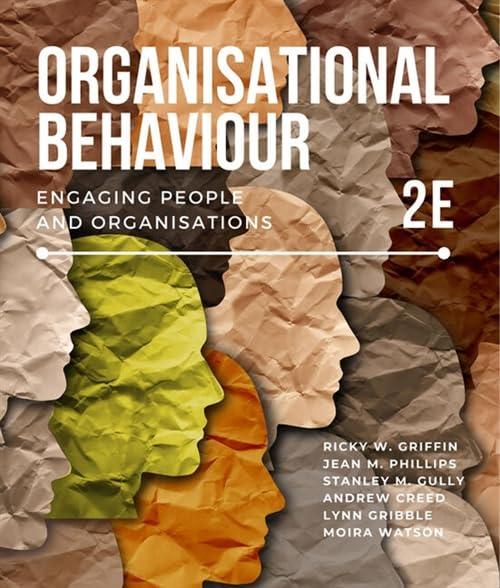While mainstream perspectives see teams as a neutral way of designing work in organisations, a critical perspective
Question:
While mainstream perspectives see teams as a neutral way of designing work in organisations, a critical perspective sees teams as a way to create, maintain and reproduce unequal power relations.133 From a critical perspective, teams are a managerial strategy to solve issues of inefficiencies and ineffectiveness in work systems. While cloaked in the language of involvement,134 teams enable the organisation to increase unequal power relations, extend control over employees and expand surveillance of their performance in order to minimise costs and maximise profits. These power dynamics within teams may partly explain some of the social loafing phenomenon described earlier in this chapter. Teams take on some of the tasks traditionally performed by managers. Rather than seeing this ceding of power as managers consciously empowering teams to determine what tasks are undertaken and how these tasks are completed,135 a critical perspective notes that the permitted recombination of task conception and execution is limited by management to those that improve productivity.136 Though management may lose some power over employees’ day-to-day activities, they are more than compensated by the gain in power to accomplish organisational goals.137 Teams can be an unseen form of exerting management control by shaping team members’ views about how they should behave in the organisation through concertive control, which is heightened in self-managed teams.138 Organisational policies and vision statements proclaim the ‘right’ behaviours and teams collaboratively determine the norms for their activities, which become both the conformity standard and the aspirational ideal.139 In concert, members create a value-based control system that they identify with and enforce on each other. They create rules they willingly obey, sometimes contrary to their own interests.140 Surveillance of team performance can be achieved by management in an all-seeing or panopticon way using electronic management information systems.141 Team members know they are being observed but do not know exactly when they are being watched. This illusion of constant surveillance creates an internal discipline where members observe the regulations and police their own behaviour. Teams also use those data to assess members’ efforts and, through continual peer scrutiny, reward ‘good teammates’ for meeting or exceeding team expectations and norms, and discipline ‘bad teammates’ with sanctions for stepping outside the code of conduct or being laggards.142 An incessant striving for continuous improvement results in teams working smarter and harder143 with work intensification accompanied by bullying and tyrannical team interactions144 causing stress and fatigue.
Reflection question:
How does this critical perspective reframe your view of the advantages and disadvantages of teams?
Step by Step Answer:

Organisational Behaviour Engaging People And Organisations
ISBN: 272389
2nd Edition
Authors: Ricky W. Griffin, Jean M. Phillips, Stanley M. Gully, Andrew Creed, Lynn Gribble, Moira Watson





